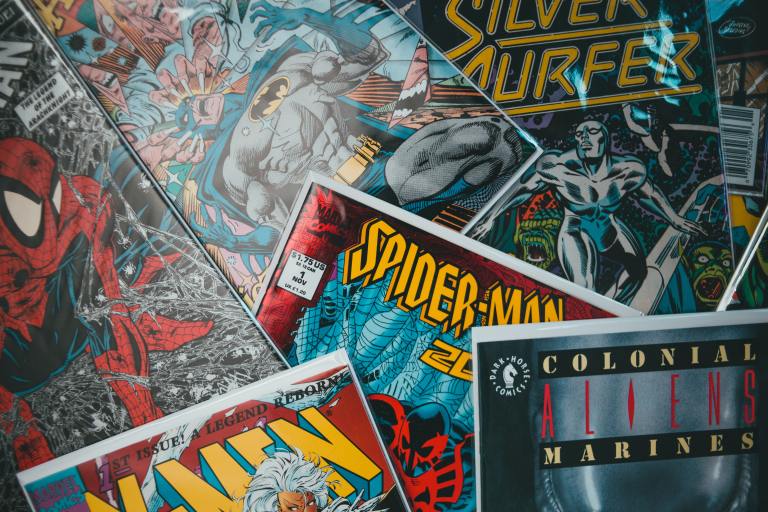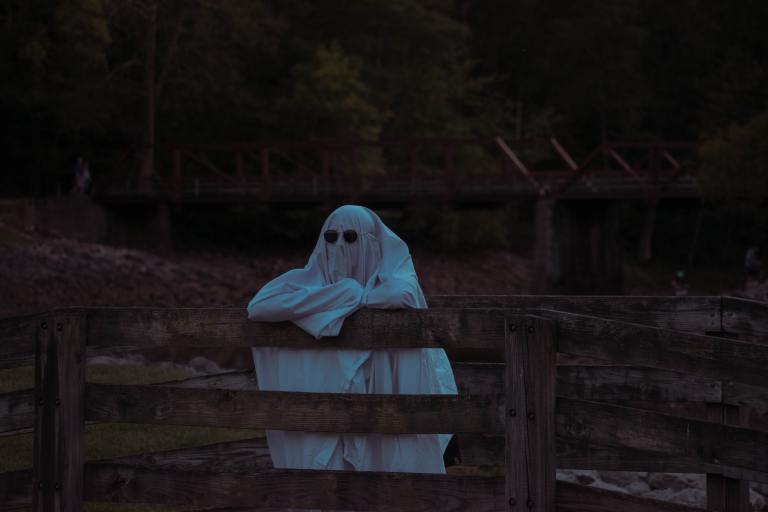This Book By An 11-Year Old Is Extraordinary. You Need To Read It Now.

Language has an all-too-canny ability to make sense of the world, to organize it into categories and put everything in its proper place, to make order of the inchoate chaos that looms everywhere and threatens to tear at the fabric of knowledge and being itself (whatever that is). I’m a male; she’s a female; this is work, that play; this is story, that is a short story; that is an author and that is a character; and so on and so forth.
But language can undo just as it does. It can scramble, rearrange, reorganize, disorient. It can forge cracks. While we may often think of language as the tool of answering, it can be engaged to render everything a question. Think of Beckett and Joyce. And of Lola Lafia’s debut novel, The Crack, written when she was 11.
I have to admit, part of me had no desire to mention her age. After all, what matter who’s speaking? (Beckett via Foucault). But, frankly, I am blown away by her. But it’s more than that. This is a very special book that articulates the exquisite madness of childhood and its beautifully demented will to wonder about everything and anything, to take it all on without guile. And I’m pretty sure this could only come from someone living through it.

The book opens with a crack: The crack in the ceiling must have been staring at me for a while. But there are cracks everywhere, blissfully introduced at every turn. At first, we seem to be in a young boy’s room, although his gender is irrelevant. This is Emil. This quickly becomes the story of Lee Cot, “western cowboy,” who lived in a very unusual though typical, fantasized world: there was the good, and the evil. Yes, it was classic for a ‘magic’ world. But this era of magic was a bit different from all the others.
Indeed it is. For not long after meeting Lee Cot and his effort to put a question mark atop the Mountain of Life before Sir E. Vil puts a period, we meet Mr. Bombompsky who always wore purple satin Indian slippers to not match (or rather in contrast) with his black suit coat with yellow hexagonal shaped buttons. This Mr. Bombompsky is apparently the one writing the story of Lee Cot and, presumably, Emil. But then who’s writing about Mr. Bombompsky? Maybe that’s Emil.
It doesn’t really matter as this Bombompsky is just an awesome, odd character who, in one of the great scenes in literature, cooks his characters into being. Mr. Bombompsky spent hours in his kitchen, cooking up delicious meals and, every time he was working on a book, he tried to cook the characters as well. He tires to create the character through cooking… And what food, you ask, makes Lee Cot? He felt spices from Morocco, nuts, chili with cheese, pickles (of course), prosciutto, and adventurous white wine. Lee Cot would not be shy to new things….
As Mr. Bombompsky begins cooking, we turn the page to find another character who’s reading about Mr. Bombompsky writing about Lee Cot: Ida Cremchanskivich’s stomach rumbled. Ida, who is from Russia but lives in New York, is trying to fly home from Europe but her trip keeps getting deferred until, finally, she ends up flying the long way around to get “home” (a Derridean turn if ever there was). Along the way, she experiences a breadth and wealth of existential questions. At one point on the plane, a kid has a tantrum, at the end of which we find this passage:
But there that moment lay, in the graveyard of dead moments, of dead history, of the unconscious forgotten stories of the world, of humans, animals, science, all from the big bang, even the unknown from before, to now, to the future forever….All the forgotten moments; forgotten by most, lay there, unraveling the ribbon of time, of the infinite moments….The music faded, the moments faded, into a mist, but a mist of color, and not forgotten mist, not waste away mist, just put aside mist: mist to think about later. With that thought in mind, Ida opened the book.
Four main characters, then. But these characters are as much authors as they are characters, writing themselves and each other into existence. This book is not a seamless fabric of characters connected by plot, by cause and effect, by personal motivations and circumstances. No, this book, as the title tells us, is cracked.
There are fractured lines between the characters: it’s not as simple as one is the author and the other a character. Their relationships are anything but seamless.
There are cracks in the so-called plot: planes go astray and, more often, streams of thought. As one story picks up speed, the book shifts focus.
There are tears in the structure of children’s stories. Lee Cot is an odd, odd bird who never really knows quite what’s happening or what he’s capable of (and what he is capable of turns out to be as surprising and odd to him as it is to us: He, his body, whomever he was seemed to be able to move through different forms of energy and matter through time.). But, more poignantly, the very structure of good versus evil is superseded by the glorious conjunction of good and evil. Life is a balance: a scale with one side holding the utopian qualities of life, the other the dystopian. And that in itself is perfect.
There are cracks in the relationship between language and person, story and reality. At one point, Ida is in a bookstore and picks up a book entitled, “Ida.” As she reads, she takes defensive offense at the misrepresentations of her life. And yet she finds herself crying. Why do you have to be so wrong, though so right? we read.
Everywhere, cracks. But these are not holes or gaps. They are openings that produce questions and possibilities that throw us back on ourselves to wonder what we’re reading, what we expect a story to be, have us wonder who’s writing whom, just as it enraptures us with exquisite characters and finely tuned details of exquisite existence. This book is itself a question mark on the mountain of literature, the mountain of language, the mountain of life. ![]()




